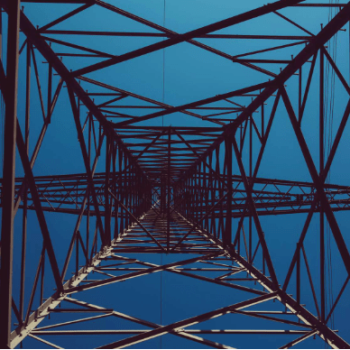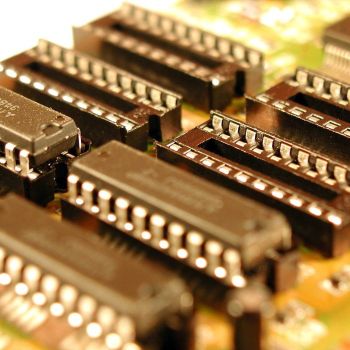Basics of Power System Analysis
- 2T - Power System Transient Stability Study Fundamentals$30.00Learn More
The ability of a power system, containing two or more synchronous machines, to continue to operate after a change occurs on the system is a measure of its stability. The stability problem takes two forms: steady-state and transient.
Contact Hours: 2 Hours - Technical
- 3T - Basic Reliability Analysis of Electrical Power Systems$50.00Learn More
Description:
This course discusses various power cable testing procedures including visualinspection, cable failures and their analysis, insulation and conductor defects, fieldtesting of medium voltage cables and different cable testing methods.This course is suitable for electrical engineers with a desire to understand thefundamentals of power cable testing. Course covers issues related to different failuretypes such as mechanical failures, overheating, chemical actions etc. and ways tomitigate them and to put cables back into the service. Upon successful completionengineers will be able to address various cable testing terms and procedures, tounderstand effects of such failures and how to organize mitigation measures in atimely manner so the service interruption time is minimized. - 5T-Harmonic Analysis Basics$75.00Learn More
Description:
This course discusses various power cable testing procedures including visualinspection, cable failures and their analysis, insulation and conductor defects, fieldtesting of medium voltage cables and different cable testing methods.This course is suitable for electrical engineers with a desire to understand thefundamentals of power cable testing. Course covers issues related to different failuretypes such as mechanical failures, overheating, chemical actions etc. and ways tomitigate them and to put cables back into the service. Upon successful completionengineers will be able to address various cable testing terms and procedures, tounderstand effects of such failures and how to organize mitigation measures in atimely manner so the service interruption time is minimized. - 6T-Switching Transients Analysis Fundamentals$90.00Learn More
Switching transients severe enough to cause problems in industrial power systems are most often associated with inadequate or malfunctioning breakers or switches and the switching of capacitor banks and other frequently switched loads. The arc furnace system is most frequently studied because of its high frequency of switching and the related use of capacitor banks.
By properly using digital computer programs these problems can be detected early in the design stage. In addition to these types of switching transient problems, digital computer programs can be used to analyse other system anomalies such as lightning arrester operation.
This course begins with a discussion of the switching transient phenomena, describes root causes and explains system operation is affected. A detailed explanation of modelling and calculation procedure is offered. Selection and sizing of surge arrester is covered in details. Explained techniques can be implemented in any commercial power system software package.
Specific Knowledge or Skill Obtained
This course teaches the following specific knowledge and skills:- Power system switching studies fundamentals
- Typical circuit parameters for transient studies
- System modelling
- 6T- Key Aspects of High Voltage Industrial Network Design$90.00Learn More
Key Aspects of High Voltage Industrial Network Design
In “Key Aspects of High Voltage Industrial Network Design” course, you'll learn...- -Needs and main constraints to be met
- -Constraints linked to the industrial process
- -Constraints linked to the electrical process
- -Constraints imposed by the utility electrical power distribution network
- -Main rules of industrial network design
- -Reactive power compensation
- -Backup and replacement sources
- -Autonomous electrical energy production
- -Choice of the earthing system
- -Insulation coordination analysis
- -Protection system definition
- -Choice of motor starting method
- -Network dynamic stability
- -Choice of optimal network structure and operation
- -Standard network structures
Overview Faced with increasingly furious competition, manufacturers need to enforce highly rigorous management and their manufacturing facilities need to be highly available. Electrical networks provide the energy needed to operate the production facilities. The provision of an uninterrupted power supply to loads is strived for from the start of the network design, especially during preliminary design of the single line diagram. Reductions in electrical installation and operating costs, together with reliable uninterrupted operation, are key profitability conditions. This technical and economic optimization asks for comprehensive preliminary assessment that includes:
-Specific requirements and constraints related to the industry type,
-Integration of the limits and constraints of the public distribution network,
-Standards and local regulations,
-Particularities of the operating staff, facilities manager and maintenance staff.
The scope of this course is limited to the assessment involved in the design of High Voltage (HV) high power industrial networks which have the following main characteristics:
-Total capacity in the 10 MVA range,
-Autonomous electrical energy generation,
-Power supplied by a national transmission or distribution network,
-Private Medium Voltage (MV) electrical distribution
This course is suitable for electrical engineers with a desire to understand the fundamentals of designing high voltage industrial network electrical systems. Course includes details about various system constraints, reactive power compensation, autonomous power production, choice of the grounding system, insulation coordination analysis etc. Upon successful completion engineers will be able to understand and consider important aspects when designing high voltage industrial networks. - 9T- Mechanical Design of Overhead Lines$135.00Learn More
Mechanical Design of Overhead Lines
Electric power can be transferred either by underground cables or overhead lines. The underground cables are not commonly used for power transmission due to two main reasons. Firstly, power is transferred over long distances to load centres. Apparently, the installation costs for underground transmission will be big. Secondly, electric power needs to be transferred at high voltages for economic reasons. It is very challenging to achieve adequate insulation to the cables to withstand such higher pressures. Hence, as a rule, power transfer over long distances is accomplished by using overhead lines. With the increase in power demand and consequent rise in voltage levels, power transmission by overhead lines has assumed considerable importance.








Validate your login
Registrarse
Crear una nueva cuenta